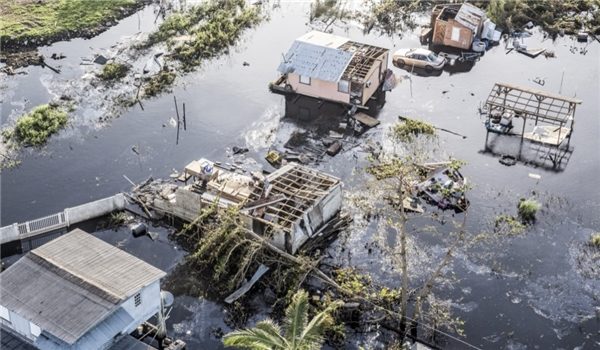
© FARS News Agency
The government of Puerto Rico has quietly acknowledged in a report posted online that in all likelihood more than 1,420 people died in the aftermath of Hurricane Maria - a figure that is more than 20 times the official death toll.
Hurricane Maria cut through the island on September 20, knocking out power and initially killing about a dozen people, according to The
New York Times.
The government's official count eventually swelled to 64, as more people died from suicide, lack of access to health care and other factors. The number has not changed despite several academic assessments that official death certificates did not come close to tallying the storm's fatal toll.But in a draft of a report to Congress requesting $139 billion in recovery funds, scheduled for official release on Thursday, the Puerto Rican government admits
that 1,427 more people died in the last four months of 2017 compared with the same time frame in the previous year. The figures came from death registry statistics that were released in June, but which were never publicly acknowledged by officials on the island.
"Although the official death count from the Puerto Rico Department of Public Safety was initially 64, the toll appears to be much higher," the report, titled "Transformation and Innovation in the Wake of Devastation", noted.
In another section, it said "according to initial reports, 64 lives were lost. That estimate was later revised to 1,427".
The government was widely criticized for undercounting the number of people who died on the island as the power outage stretched for months, causing deaths from diabetes and sepsis to soar. Many people died from lack of access to hospitals, or because there was no power to run the machines they used to breathe.After a
New York Times analysis in December showed that even the preliminary data from the Demographic Registry of Puerto Rico indicated that hurricane-related deaths may have risen to 1,052, Gov. Ricardo Rosselló commissioned a study from George Washington University's school of public health. The report is expected to be released this month.
"We definitely acknowledge this is a realistic estimate," Pedro Cerame, a spokesman for the Puerto Rican government's Federal Affairs Administration, said of the numbers in the upcoming report to Congress, adding that "we don't want to say it out loud or publicize it as an official number. The official number will come, and it could be close. But until we see the study, and have the accuracy, we won't be able to recognize the number as official".
Cerame acknowledged that the final version of the report hedges the language to say that the additional deaths "may or may not be attributable" to the storm; the 1,427 figure was also deleted from a chart.
"I want to emphasize, though, that we have always expected the number to be higher," he said in an email, adding that "the estimate provided was done using data from the Demographic Registry which was made available to the members of the media".
The official death toll has not been updated, he stated, because officials are awaiting the outcome of the George Washington University study to provide certainty, adding that "once GW's study is out, the number will be updated".Researchers at Penn State University had reached an estimate very similar to The Times' assessment. A much-publicized study from Harvard University showed the deaths could have ranged from 800 to 8,500.The final version of the recovery plan being submitted to Congress outlines ambitious projects for Puerto Rico that include major highway renovations, $15 billion for the Department of Education and $26 billion for the energy grid. The government has asked for $6 billion for repair and replacement of public buildings and $3.9 billion for environmental use, according to an announcement from the governor's office.
"Puerto Rico has a unique opportunity to innovate and rebuild the Puerto Rico that we all want," Governor Rosselló said in a statement.
Comment: See also: Official death toll from Puerto Rico's Hurricane Maria was grossly underestimated; likely 70 times higher